
by Kelly McCracken | Jul 1, 2016 | Emergency, Pediatrics
SUMMERTIME!
 Fourth of July is around the corner and kiddos are running around and having FUN! In the Midwest heat, a lot of fun involves water, and therefore, slippery surfaces. Roughhousing, baseball, and being a child, all cause collisions. Teeth inevitably get knocked out or damaged.
Fourth of July is around the corner and kiddos are running around and having FUN! In the Midwest heat, a lot of fun involves water, and therefore, slippery surfaces. Roughhousing, baseball, and being a child, all cause collisions. Teeth inevitably get knocked out or damaged.
Dentists see many trauma-related tooth injuries this time of year; especially in kids! When a tooth is knocked-out, this is medically called an “avulsed” tooth. A chipped tooth (photo below) is something totally different than a tooth that is knocked out; an avulsed tooth is completely out with its entire root intact.
“OMG, a kid just knocked out a tooth.”
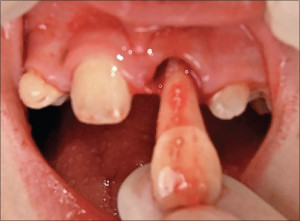 REDUCING THE TIME OF THE TOOTH OUTSIDE OF THE MOUTH is THE #1 KEY to SUCCESS!
REDUCING THE TIME OF THE TOOTH OUTSIDE OF THE MOUTH is THE #1 KEY to SUCCESS!
If your kiddo is under Age 6, likely, an avulsed tooth is a primary/baby tooth and should not be re-implanted. However, any mouth trauma, even in a kid without permanent teeth, should be evaluated to monitor their permanent tooth transition. ONLY permanent teeth should be repositioned.
TEETH 101: HELP! A Tooth Is OUT!
ARE YOU A PARENT / COACH / LIFEGUARD? So…you’re around kids…
If you encounter an avulsed (knocked-out, with the root) permanent front tooth;
follow these simple steps for the best outcome for this kiddo’s smile and CALL a dentist:
-
Keep the “patient” calm. It will probably be bleeding, and the kid likely be losing his/her mind. You should be calm. You CAN handle this.
-
Find the tooth and pick it up by the enamel/crown (the part of the tooth that shows in the smile) NOT YELLOW LONG PART; which is the conical “root” of the tooth. (see photo directly below right – where the gloved blue hand is touching the tooth)
-
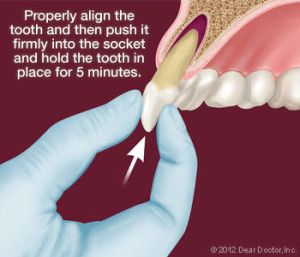 If the tooth ROOT is dirty, either, place the tooth in the “patient’s” mouth; they can spit out any blood and dirt while keeping the tooth in the mouth, if it’s not a choking hazard, OR wash it BRIEFLY (less than 10 seconds) under cold running water. You should be mentally ready to re-position the tooth in the socket IMMEDIATELY, as close to the smile line of the mirror/neighboring teeth as possible.
If the tooth ROOT is dirty, either, place the tooth in the “patient’s” mouth; they can spit out any blood and dirt while keeping the tooth in the mouth, if it’s not a choking hazard, OR wash it BRIEFLY (less than 10 seconds) under cold running water. You should be mentally ready to re-position the tooth in the socket IMMEDIATELY, as close to the smile line of the mirror/neighboring teeth as possible.
-
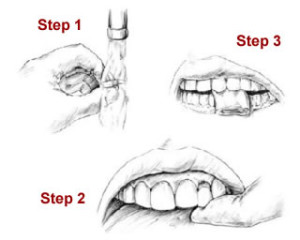 REINSERT THE TOOTH. Make sure the correct side of the tooth is facing out. No need to push hard. Likely bloody bubbles will come out as it squishes into place.
REINSERT THE TOOTH. Make sure the correct side of the tooth is facing out. No need to push hard. Likely bloody bubbles will come out as it squishes into place.
-
HAVE THE “PATIENT” BITE ON A RAG OR CLOTH. It will be tender and starting to swell. This is may be a painful, but its an EXTREMELY important step!
-
IF YOU CAN’T/DON’T FEEL COMFORTABLE TO REINSERT THE TOOTH, place the tooth in one of three places:
- Hank’s Balanced Solution (seen right, available in many First Aid kits)
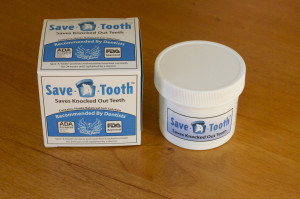
- In the side of the cheek of the “patient,” sandwiched between their lower teeth and cheek, if it’s not a choking risk.
- In MILK
- DO NOT STORE THE TOOTH IN WATER – a teaspoon of salt in a cup of bottled water in a clean container can work in a pinch.
SEEK EMERGENCY DENTAL TREATMENT IMMEDIATELY. Time is of the essence.
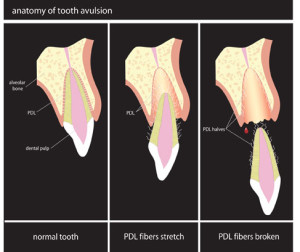 After dental intervention and implantation – there are many different outcomes; which may include immediate splinting (think: bonded retainer to hold it in place), root canal therapy, or unfortunately, complete loss. Cross your fingers for a complete recovery! Later in tooth-life, the tooth may die, ankylose (get stuck in the bone), change colors, or need a root canal or crown.
After dental intervention and implantation – there are many different outcomes; which may include immediate splinting (think: bonded retainer to hold it in place), root canal therapy, or unfortunately, complete loss. Cross your fingers for a complete recovery! Later in tooth-life, the tooth may die, ankylose (get stuck in the bone), change colors, or need a root canal or crown.
There’s a hopeful chance that the tooth will be okay, IF given prompt and proper treatment. Prognosis is always unknown, but following these steps will give the patient/tooth a hopeful outcome!
EXCEPTIONS:
If you encounter a dental emergency like this, call your regular dentist. If you don’t have a regular dentist, feel free to give us a call at (913) 788-7600.

Kelly McCracken, DDS
If you want to get to know our office, request to schedule an appointment online! Consultations are always complimentary, and as a small business in Kansas City, we appreciate the referrals and strive to deliver our mission of, “QUALITY, HONESTY, and EDUCATION” in a comfortable and fun environment for your family.
We’d love to have you as part of OUR dental family! 8915 State Ave., Kansas City, KS 66112. (913) 788-7600
**This post was for educational purposes and tips – not a diagnosis or recommendation(s) for treatment; if you, or someone you care for, has suffered a trauma as described above, seek immediate dental attention; and if your dentist or our office is not available, don’t hesitate to contact your primary care doctor or go to the ER.
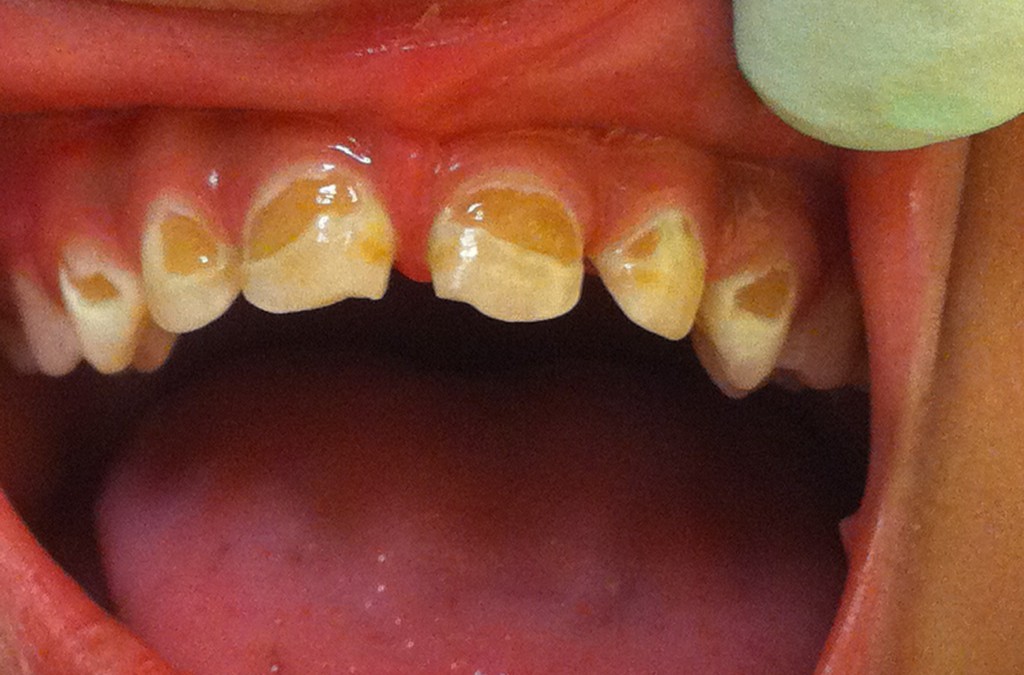
by Kelly McCracken | Feb 15, 2016 | Pediatrics, Restorative, Uncategorized
February is Children’s Dental Health month! Often, as a dentist, we hear, “The cavities are only on baby teeth, they will fall out.” This is true, but the impact of these “baby” or primary teeth have an impact on your child’s current well-being and future orthodontic (braces!!) treatment. Baby (primary) teeth are “placeholders” for your child’s adult teeth. When a primary tooth is lost before it’s natural time, it affects the alignment of the child’s adult/permanent teeth.
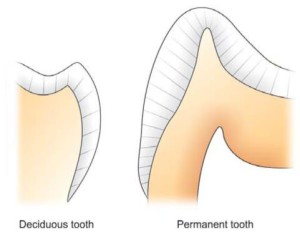 KIDDO TEETH ARE FRAGILE!
KIDDO TEETH ARE FRAGILE!
The enamel, or outer shell of a tooth (think of it like the nail on your finger), that protects the softer inner layer (dentin) and nerve/pulp of a tooth from acids and sugars, is MUCH thinner in primary (also called baby or deciduous) teeth than it is in an adult tooth. A primary tooth can develop a cavity in only six months where a permanent adult tooth can take up to 18 months to develop a “smooth surface” treatable cavity.
PREVENTION IS CHEAPER THAN REPAIR
Prevention, by definition, means stopping an anticipated problem before it starts. A child should be seen at the dental office by their FIRST birthday! You are probably saying, “Why – they hardly have any teeth!”. This is PREVENTION and it’s for many reasons:
- Parents benefit from “Oral Health Education” including; dietary counseling, hands-on training in teeth cleaning, risk assessment for decay/cavities, and fluoride recommendations based on individual age and needs.
- The “Age One” visit may give the parent insight into potential problems and an appropriate schedule for visits can be advised by your dental professional.
WHAT CAUSES CAVITIES?
 In infants, a specific pattern of decay, known as “Baby Bottle Decay” (BBD) was characterized by decay associated with a night-time bottle that contained ANYTHING except water. Juices have fructose sugars, milk has lactose sugars, and sugar sweeteners in Kool-Aid and soda create a feeding ground for bacteria.
In infants, a specific pattern of decay, known as “Baby Bottle Decay” (BBD) was characterized by decay associated with a night-time bottle that contained ANYTHING except water. Juices have fructose sugars, milk has lactose sugars, and sugar sweeteners in Kool-Aid and soda create a feeding ground for bacteria.
The more modern term is “Early Childhood Caries” (ECC) and it includes age groups beyond infancy to reflect a larger age group where the root cause is usually; a “sippy-cup,” at-will breastfeeding throughout the night, pacifiers with sweeteners, and teething-soothing liquids used with much regularity.
Bacteria found in the oral cavity feeds on these sugars creating acids that degrade the already fragile enamel of children’s teeth. This typically looks like brown spots on the outsides of front teeth and then progresses to the back of the mouth. However, it can occur in any tooth. If a parent observes brown spots on a child’s tooth/teeth, consult a dental professional immediately.
CAVITIES CAN BE SPREAD TO YOUR BABY!
The bacteria, streptococcal mutans (SM), is not present in the mouth of a newborn. Studies indicate that SM is introduced from a parent or caregiver through kissing, masticated (chewed) food, or other oral contact.
HOW DO I GET OFF THE “CAVITY CAROUSEL”?
We all know you cannot help but kiss your baby. (Let’s get serious – those cheeks! those lips!) Bacteria that produces cavities will be introduced to your child at some point in his or her life. So, here are some tips to promote oral health:
- Start “cleaning” your infant’s gums with a warm washcloth daily, before teeth even erupt! This will get your infant used to oral cleaning and will help when teething begins.
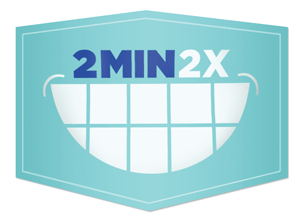
- Complete an “Age One” visit. You can see your General Dentist or choose to see a specialist who is deemed a Board Certified “Pediatric Dentist.”
- Practice 2:2×1 = Two minutes, twice per day brushing. (You should floss while your kiddo brushes!) You should floss your child’s teeth as soon as two neighboring teeth touch.
- A child should NOT be brushing their teeth UNSUPERVISED until SEVEN years old. SEVEN.
- A parent should brush their child’s teeth once per day, preferably at bedtime.
- Give the child “ownership” of brushing in the morning, depending on age and responsibility level.
- Ages 3-6: a grain of rice smear of fluoride toothpaste; 6+ years old; a pea-sized amount.
- Natural sugars (raisins, fruit snacks) and carbohydrates (cereals, crackers, granola) are sticky and bacteria can easily interact over periods of time. Limit FREQUENCY of snacks. This reduces the sugar introductions.
- Saliva is a natural healer! Reducing the frequency of feedings/snacks increases salivary healing – it takes time! Hourly snacking will not allow the mouth to defend against the sugars.
There are many resources also available on the American Dental Association‘s website.
MY 2 ½ YEAR OLD HASN’T SEEN THE DENTIST…
No matter how old, you aren’t too old for a first visit. Don’t sweat it! The AAPD just changed the “rules” recently! Call or Request and Appointment!
Your dentist should be willing to give your kiddo a “ride” in the chair and show what may be seen or felt in an appointment. Just because your child’s first (or second, or third) appointment is a total melt-down; you are introducing your child to a lifetime of good oral health. Don’t be embarrassed if your kiddo loses it. (It happens even when you’ve been practicing at home!) And if your general dentist refers your child to a specialist; it’s not a failure on your part. Taking care of your infant’s teeth guarantees when the “threenager” time hits, you will know that they can take care of their teeth when they are really a teen.
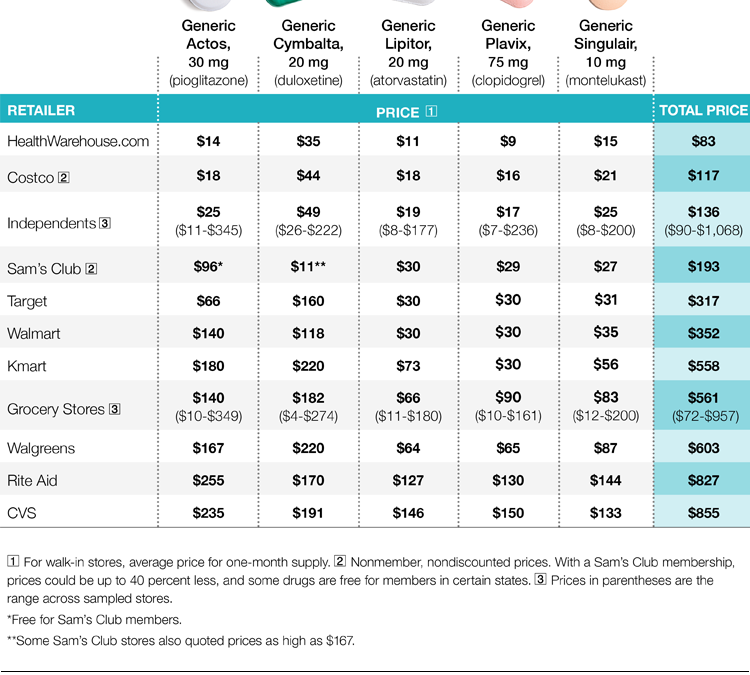
by Kelly McCracken | Feb 1, 2016 | Insurance, Pharmacy
According to the American Dental Association.
As a prescriber, I was shocked when I needed my own prescription filled (I took it to CVS – big mistake). I have prescription drug coverage, or so I thought. It hardly covered 25% of the cost! So what’s the deal?
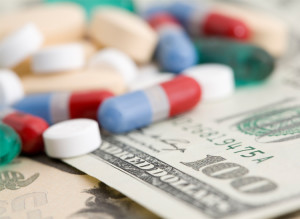
As a dentist, we prescribe:
- antibiotics for things like; tooth pain from needing a root canal, periodontal disease, or even for a sinus infection that is causing upper tooth pain
- pain medication – post-operative pain relief or pain from a cracked/dying tooth
- Oral mouth rinses for periodontal disease, etc.
To help you be better prepared to take your prescription to the pharmacist, here’s the list and check out the full article from Consumer Reports.
-
Skip chain drugstores. For all five drugs we priced, the big pharmacy chains consistently charged the most. Among all of the walk-in stores, Costco offered the lowest prices. You don’t need to be a member to use its pharmacy, though joining can net you more discounts.
-
Support independents. Though you might think that mom and pop stores usually charge higher prices, we found that wasn’t always the case. In fact, we found some real bargains at local independent pharmacies, as well as some higher prices. We also found wide fluctuations at supermarkets, another place you might not expect to save. Another advantage of independent drugstores: We often had luck asking for a lower price, where pharmacists might have more flexibility to match or beat competitor’s prices.
-
Don’t always use your health insurance. Many chain and big-box stores offer hundreds of common generics at prices as low as $4 for a 30-day supply and $10 for a 90-day supply for people who pay out of pocket. Sam’s Club even fills some prescriptions free for members. Check the fine print: There may be a small fee to sign up, and not all discount programs are open to people with Medicare, Medicaid, or Tricare insurance. And keep in mind that when you bypass your insurance, money spent on your medication won’t count toward your deductible or out-of-pocket maximums.
-
Always ask “Is this your lowest price?’ ” Victor Curtis of Costco told us that its contracts for Medicare Part D plans prohibit pharmacists from offering a better cash price to a customer unless a customer asks. And Rite Aid told us that their pharmacists process prescriptions through insurance unless customers tell them to do otherwise. Usually we found that asking can prompt the person on the phone to dig a bit for any available discount programs, cards, and coupons. Check back often, because prices and offers may change. And never assume that one pharmacy’s “discounted” price is lower than another’s regular price.
-
Seek a 90-day prescription. For drugs you take long term, it can be more convenient and even cheaper. For example, if you use insurance, you’ll pay one co-pay rather than three. And for discount generic drug programs, paying $10 for a 90-day supply works out to less than $4 every 30 days.
-
Look online. If you’re paying out of pocket, check GoodRx.com to learn its “fair price” and use that to negotiate if a pharmacist quotes you a higher price. You can also fill a prescription with an online pharmacy. The one we shopped, HealthWarehouse.com, had the lowest prices overall. Just be careful about the one you choose. Only use an online retailer that clearly operates within the U.S. and displays the “VIPPS” symbol to show that it’s a Verified Internet Pharmacy Practice Site. Most sites that bill themselves as “Canadian” are actually fake storefronts selling low-quality or counterfeit products. Internet pharmacies based in other countries that advertise heavily discounted medications are almost never legitimate, according to the National Association of Boards of Pharmacy (NABP), a nonprofit organization that accredits pharmacy websites. Once you’ve verified that a retailer is legit, read terms carefully. For example, HealthWarehouse.com ships to all 50 states; others may not. And you’ll have to wait for shipping.
As an example of how you can research online, attached is the Sam’s Club Drug List.
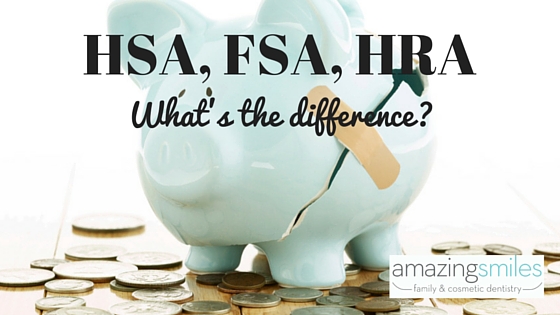
by Kelly McCracken | Jan 11, 2016 | Insurance
Flexible Spending • Health Savings Account • Health Reimbursement Account
What do HSA, HRA, and FSA mean?
HSA: Health Savings Account
HRA: Health Reimbursement Arrangement
FSA: Flexible Spending Account
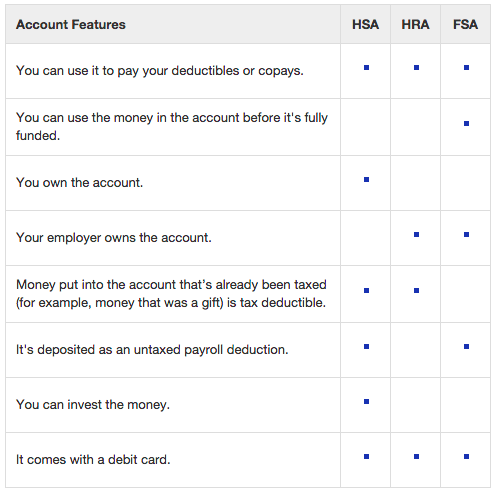
How can I use my $$$ at the Dental Office?
You are free to use your debit card on any co-pays, treatment, and patient portion payments. We have met resistance in using your card for electric toothbrushes, whitening or other cosmetic procedures.
Check the rules with the IRS HERE for each type of account and call us to make your appointment to utilize your benefits!

 Fourth of July is around the corner and kiddos are running around and having FUN! In the Midwest heat, a lot of fun involves water, and therefore, slippery surfaces. Roughhousing, baseball, and being a child, all cause collisions. Teeth inevitably get knocked out or damaged.
Fourth of July is around the corner and kiddos are running around and having FUN! In the Midwest heat, a lot of fun involves water, and therefore, slippery surfaces. Roughhousing, baseball, and being a child, all cause collisions. Teeth inevitably get knocked out or damaged. REDUCING THE TIME OF THE TOOTH OUTSIDE OF THE MOUTH is THE #1 KEY to SUCCESS!
REDUCING THE TIME OF THE TOOTH OUTSIDE OF THE MOUTH is THE #1 KEY to SUCCESS! If the tooth ROOT is dirty, either, place the tooth in the “patient’s” mouth; they can spit out any blood and dirt while keeping the tooth in the mouth, if it’s not a choking hazard, OR wash it BRIEFLY (less than 10 seconds) under cold running water. You should be mentally ready to re-position the tooth in the socket IMMEDIATELY, as close to the smile line of the mirror/neighboring teeth as possible.
If the tooth ROOT is dirty, either, place the tooth in the “patient’s” mouth; they can spit out any blood and dirt while keeping the tooth in the mouth, if it’s not a choking hazard, OR wash it BRIEFLY (less than 10 seconds) under cold running water. You should be mentally ready to re-position the tooth in the socket IMMEDIATELY, as close to the smile line of the mirror/neighboring teeth as possible. REINSERT THE TOOTH. Make sure the correct side of the tooth is facing out. No need to push hard. Likely bloody bubbles will come out as it squishes into place.
REINSERT THE TOOTH. Make sure the correct side of the tooth is facing out. No need to push hard. Likely bloody bubbles will come out as it squishes into place.
 After dental intervention and implantation – there are many different outcomes; which may include immediate splinting (think: bonded retainer to hold it in place), root canal therapy, or unfortunately, complete loss. Cross your fingers for a complete recovery! Later in tooth-life, the tooth may die, ankylose (get stuck in the bone), change colors, or need a root canal or crown.
After dental intervention and implantation – there are many different outcomes; which may include immediate splinting (think: bonded retainer to hold it in place), root canal therapy, or unfortunately, complete loss. Cross your fingers for a complete recovery! Later in tooth-life, the tooth may die, ankylose (get stuck in the bone), change colors, or need a root canal or crown.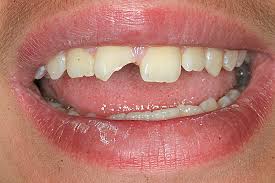





 KIDDO TEETH ARE FRAGILE!
KIDDO TEETH ARE FRAGILE! In infants, a specific pattern of decay,
In infants, a specific pattern of decay, 



